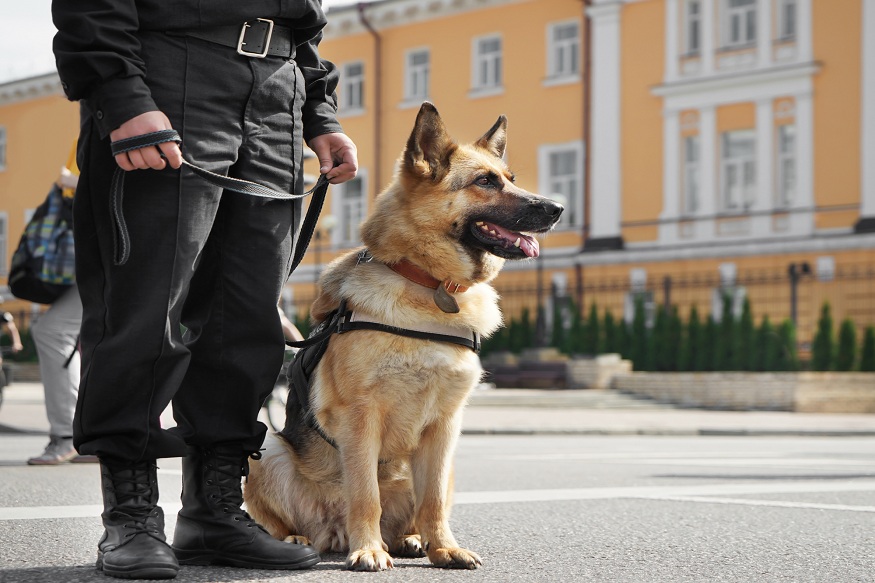 The modern police dog represents one of the most advanced tools in law enforcement today. Far beyond serving as a simple deterrent, these highly trained animals are vital partners in maintaining safety, order, and public confidence. Through rigorous, science-based training programs, natural canine instincts are carefully shaped into specialized, dependable skills. The effectiveness of a police dog ultimately begins with proper selection and continues through a well-structured, disciplined education that builds a remarkable partnership between handler and K-9.
The modern police dog represents one of the most advanced tools in law enforcement today. Far beyond serving as a simple deterrent, these highly trained animals are vital partners in maintaining safety, order, and public confidence. Through rigorous, science-based training programs, natural canine instincts are carefully shaped into specialized, dependable skills. The effectiveness of a police dog ultimately begins with proper selection and continues through a well-structured, disciplined education that builds a remarkable partnership between handler and K-9.
Note: US K9 is the premier k9 police dog training company based in Florida. The training professionals travel to various cities around the world providing short and long term k9 dog training.
Selecting the Elite: Breeds for the Beat
The process of choosing a police dog is far from random. Only a select few dogs possess the perfect combination of drive, intelligence, and emotional balance required for this line of work. Evaluations focus on several essential traits, including:
- Exceptional energy and motivation
- Confidence in new and stressful environments
- A balanced and stable temperament
- Quick learning ability and sharp instincts
- A strong, consistent work ethic
Globally, most K-9 programs rely on a few breeds proven to excel under pressure.
German Shepherds have long been considered the gold standard for law enforcement. Their versatility, loyalty, and strength make them capable of handling everything from criminal apprehension to search and rescue.
Belgian Malinois dogs, lighter and faster than German Shepherds, are increasingly favored for their agility and endurance. Their smaller size allows them to navigate tight spaces while maintaining stamina during lengthy missions.
Dutch Shepherds offer similar advantages, with their intelligence and drive making them dependable for demanding police operations.
Not all law enforcement duties require an intimidating presence. For detection work—such as finding drugs, explosives, or accelerants—trainers prefer breeds with exceptional noses and calm temperaments.
Labrador Retrievers and Springer Spaniels excel at scent work, thriving in airport security, border inspection, and arson investigations. Their friendly appearance helps them work comfortably in public environments.
Finally, the Bloodhound remains unmatched in scent tracking. Its powerful sense of smell allows it to follow trails that are hours or even days old, making it a vital asset in locating missing persons or fugitives.
The Training Pipeline: From Puppy to Protector
Police dog training goes far beyond basic obedience—it’s a deeply scientific process that refines a dog’s instincts into precise, mission-ready skills.
Note: US K9 is the premier k9 police dog training near me company based in Florida. The training professionals travel to various cities around the world providing short and long term k9 dog training.
The U.S. K-9 Academy, a globally recognized training center based in Miami, is a leader in this field. The academy trains both dogs and handlers, ensuring that each team performs as a seamless unit. Their programs include handler certification, advanced trainer courses, and consulting services for law enforcement agencies worldwide.
Stage One: Foundation Training
This initial stage focuses on obedience and bonding. Dogs learn to respond instantly to basic commands like “sit,” “stay,” and “heel.” Consistent, reliable obedience is non-negotiable, as it forms the foundation for every advanced task. Just as importantly, the handler-dog relationship is built on mutual trust and respect, allowing the pair to communicate effectively under pressure.
Stage Two: Specialized Conditioning
Once obedience is mastered, the dog progresses to more sophisticated exercises based on Operant Conditioning—a behavioral science method that uses positive reinforcement to shape specific responses.
- Detection Training (Nose Work):
Dogs are taught to associate target scents with their favorite toy or reward. This process typically involves:
- Pairing the odor with a toy so the dog connects the scent with playtime.
- Gradually removing the toy, rewarding only when the dog locates the scent source.
- Learning alert behaviors, such as sitting silently (Passive Alert) for explosives or barking and scratching (Aggressive Alert) for narcotics.
- Apprehension and Patrol Training:
For patrol dogs, training centers around controlled aggression and discipline. Dogs are conditioned to track, pursue, and restrain suspects while maintaining full obedience to handler commands. This ensures they can neutralize threats without causing unnecessary harm. - Real-World Scenario Training:
In the final phase, dogs are tested in simulated environments that mirror actual field conditions—abandoned buildings, busy streets, and dense forests. Trainers introduce distractions such as gunfire, shouting, and unpredictable movements to verify that each dog can perform reliably in high-stress situations.
At the U.S. K-9 Academy, experienced instructors with decades of field expertise guide each team through these real-world exercises, ensuring that both the dog and handler are fully prepared for active duty.
The K-9 Mission: Diverse Functions of a Trained Dog
Upon completion of training, police dogs are ready to perform a wide range of critical functions that protect lives and strengthen community safety. Most law enforcement agencies classify K-9 units into three main categories:
1. Patrol Dogs (Dual-Purpose)
These dogs combine physical apprehension skills with a detection specialty, typically in narcotics or explosives. Their tasks include:
- Subduing or detaining suspects
- Protecting officers during arrests or riots
- Searching buildings and vehicles for hidden threats
- Providing a visible deterrent during patrols and crowd control operations
A patrol dog’s mere presence can often defuse volatile situations before force becomes necessary.
2. Detector Dogs (Single-Purpose)
Trained specifically for scent detection, these K-9s play a vital role in maintaining public safety. Dogs trained at US K-9 Academy are DEA-certified and operate in high-security settings such as airports, government buildings, and border checkpoints.
They detect:
- Narcotics: including cocaine, heroin, methamphetamine, and marijuana
- Explosives: from improvised devices to ammunition and firearms components
Detector dogs’ non-aggressive behavior makes them suitable for civilian-heavy environments where a calm presence is essential.
3. Search and Rescue (SAR) and Tracking Dogs
SAR dogs are trained to locate missing persons, fugitives, and disaster victims. The Bloodhound, with its unmatched sense of smell, remains the top choice for long-distance tracking. Meanwhile, Cadaver Dogs, a subset of SAR units, specialize in locating human remains—providing closure for families and crucial evidence for investigators.
The Legacy of the Police Dog
No piece of modern technology can rival the sensory precision of a well-trained K-9. Their sense of smell can detect odors at concentrations far beyond human-made devices, and their loyalty and bravery make them indispensable to law enforcement.
The true success of any police dog lies in the combination of expert training, the bond with its handler, and the dedication of institutions like the U.S. K-9 Academy. Through careful selection, advanced behavioral methods, and continual training, these dogs embody courage, intelligence, and the unbreakable connection between humans and their canine partners.
Note: Paver Company Fort Lauderdale, Brick Pavers Fort Lauderdale. We provide stone, brick and concrete pavers and paving systems for residential and commercial properties
